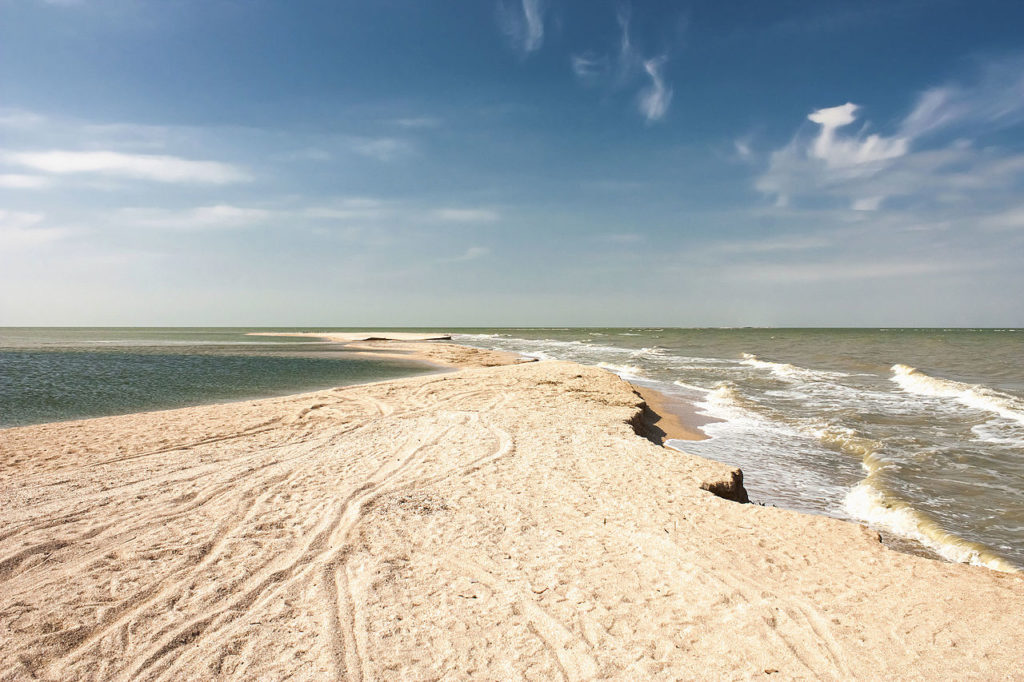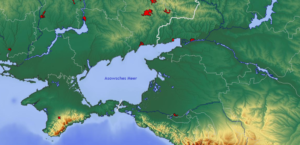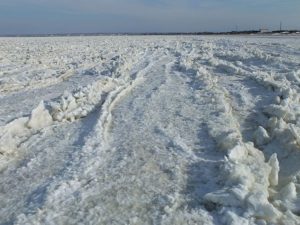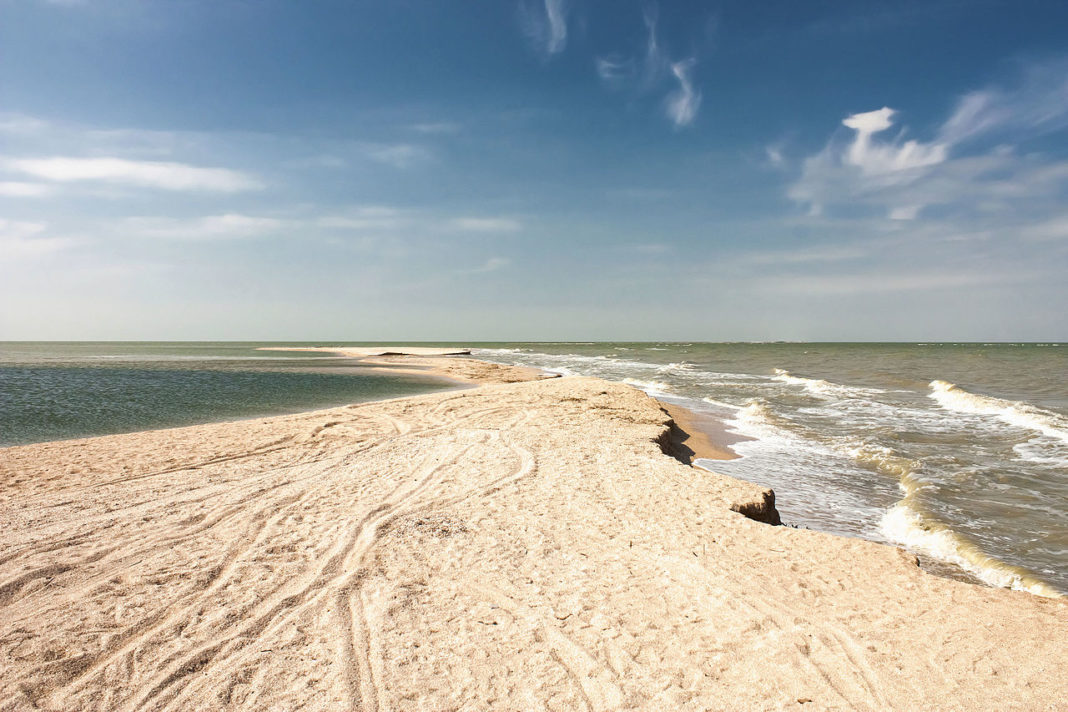The Sea of Azov is a sea in Eastern Europe connected to the Black Sea by the narrow (about 4 km or 2.5 mi) Strait of Kerch and is sometimes regarded as a northern extension of the Black Sea. The sea is bounded by Russia on the east, Ukraine on the northwest, and Crimea on the southwest.

The sea is largely affected by the inflow of the Don, Kuban, and other rivers, which bring sand, silt, and shells, which in turn form numerous bays, limans, and narrow spits. Because of these deposits, the sea bottom is relatively smooth and flat with the depth gradually increasing toward the middle. Also, due to the river inflow, water in the sea has low salinity and a high amount of biomass (such as green algae) that affects the watercolor. Abundant plankton results in unusually high fish productivity. The sea shores and spits are low; they are rich in vegetation and bird colonies. The Sea of Azov is the shallowest sea in the world, with the depth varying between 0.9 and 14 meters. There is a constant outflow of water from the Sea of Azov to the Black Sea.

In antiquity, the sea had other names. In antiquity, the sea was usually known as the Maeotis Swamp from the marshlands to its northeast. It remains unclear whether it was named for the nearby Maeotians or if that name was applied broadly to various peoples who happened to live beside it. Other names included Lake Maeotis or Maeotius (Mæotius or Mæotis Lacus); the Maeotian or Maeotic Sea; the Cimmerian or Scythian Swamps; and the Cimmerian or Bosporic Sea. The Maeotians themselves were said by Pliny to call the sea Temarunda (alternative spellings Temarenda and Temerinda), meaning “Mother of Waters”.
The sea is 360 kilometers long and 180 kilometers wide and has an area of 39,000 square kilometers. The main rivers flowing into it are the Don and Kuban; they ensure that the waters of the sea have comparatively low salinity and are almost fresh in places, and also bring in huge volumes of silt and sand. Accumulation of sand and shells results in a smooth and low coastline, as well as in numerous spits and sandbanks.

A remarkable feature of the Sea of Azov is the large complex of shallow lagoons called Sivash or “Rotten Sea”. Their typical depth is only 0.5–1 meters with a maximum of 3 meters. They cover an area of 2,560 square kilometers in northeastern Crimea which is separated from the sea by the Arabatsk Spit. North of the spit lies the city of Henichesk (population 22,500) and south of it is the Bay of Arabat. Sivash accepts up to 1.5 km3 of Azov water per year. Because of the lagoons’ wide extent and shallowness, the water rapidly evaporates, resulting in a high salinity of 170 on the practical salinity scale. For this reason, Sivash has long had an important salt-producing industry.
According to Wikipedia














